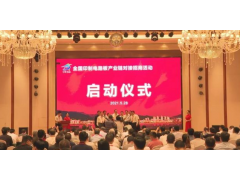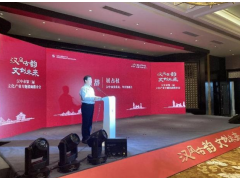In recent years, with the growing demand for industrial automation, the global sales and revenue of industrial robots have continued to grow. According to the "2023 World Robotics Report" released by the International Federation of Robotics, global industrial robot sales in 2022 exceeded 500,000 units for the second consecutive year, a year-on-year increase of 5%. China is the world's largest robot market, and in 2022, China's industrial robot sales accounted for more than half of the world's total. The International Federation of Robotics predicts that the global robot market will reach US$66 billion by 2024.
More application areas
Unicraft Nagra Co., Ltd. of Japan is a company that mainly produces precision parts for automobile steering, gearboxes, home appliances, etc. A reporter recently visited the factory and saw that in the process section of gearbox screw production, several robots were installing suction cups to complete multi-position material collection and discharge of feed trays, thread processing, and drilling... The repetitive positioning accuracy of the robot operation is within 0.02 mm, which is thinner than a hair.
These industrial robots come from China Jieka Robot Co., Ltd. Jieka focuses on the innovative research and development of the new generation of collaborative robots and smart factories. Nakamura Ko, the technical section chief of Unicraft Nagra Co., Ltd., told reporters that the Jieka robot can use 6 languages, and the operation interface is simple and easy to understand. Workers only need to learn for 2 hours to easily operate it. This robot is also equipped with special application software, which can be remotely controlled through the application without connecting to external communication equipment through wires, which is very convenient.
With the vigorous rise of a new round of scientific and technological revolution and industrial transformation, new-generation digital technologies such as artificial intelligence and sensing are accelerating their integration with the robotics industry, which has promoted the pace of technological innovation in the robotics industry, made robots in their original application fields more powerful, and opened up new application fields.
Li Xiaohua, a researcher at the Institute of Chinese Modernization of the Chinese Academy of Social Sciences, told reporters that early industrial robots mainly replaced workers in heavy physical labor or work in harsh environments, such as handling, loading and unloading, welding, spraying, etc. in the fields of automobile manufacturing, shipbuilding, and chemical industry. In recent years, the application areas of industrial robots have begun to expand to high-precision scenarios in industries such as computers, communications, and consumer electronics.
According to experts, the global demand for industrial robots is mainly concentrated in countries with large manufacturing industries and relatively high levels of automation. Currently, more than 70% of the world's industrial robots are deployed in China, Japan, the United States, South Korea and Germany. In 2022, the sales of industrial robots in these five markets accounted for 79.1% of the world's total. According to a report by the International Federation of Robotics, the number of newly installed industrial robots in factories around the world in 2022 was 553,000, of which Asia accounted for 73%, Europe accounted for 15%, and the Americas accounted for 10%.
From the perspective of industry structure, more than half of the global demand for industrial robots comes from the automotive industry and the electrical and electronics industry. In addition, industrial robots are also widely used in production lines in industries such as food and medicine, helping companies reduce costs and enhance competitiveness by improving production efficiency and accuracy. "Driven by advances in digital technology, robot suppliers and system integrators provide new applications and improve the speed and quality of existing applications. Connected robots are changing the manufacturing industry, and robots will increasingly operate as part of an interconnected digital ecosystem," the International Federation of Robotics report pointed out.
China's market has huge potential
China is the world's largest robot market. Data shows that industrial robot applications have covered 60 major industries and 168 medium industries in China's national economy. China has been the world's largest industrial robot market for 10 consecutive years. In 2022, China's industrial robot output reached 443,000 sets, an increase of more than 20% year-on-year, and the installed capacity accounted for more than 50% of the world's total. According to the International Federation of Robotics, China installed about 290,000 industrial robots in 2022, a year-on-year increase of 5%.
In recent years, world-renowned robot companies such as ABB, FANUC, and Yaskawa Electric have entered the Chinese market. In December 2022, the ABB Robotics Super Factory was officially completed and put into production in Pudong New Area, Shanghai. This super factory has an investment of US$150 million and covers an area of 67,000 square meters. It is ABB's largest robot R&D, production and application base in the world. Sami Ambani, President of ABB Group's Robotics and Discrete Automation Division, said that China is the world's fastest growing robot market with huge potential for future development. The huge opportunities in the Chinese market are crucial to the ABB Group.
Marina Bier, President of the International Federation of Robotics, said: "In order to serve China's vibrant market, domestic and foreign robot suppliers have established production plants in China and continuously increased their production capacity." "In 2022, China's industrial robot market accounted for 52% of the global market. It is worth noting that in the past 10 years, the number of industrial robots independently produced by China has grown rapidly, and almost more than half of the economic fields have used independent brand robots." Chen Dan, deputy secretary-general of the Robotics Branch of the China Machinery Industry Federation, told reporters.
With the rapid development of China's industrial robot industry, more and more domestic industrial robot companies are accelerating their overseas expansion. According to data from the International Federation of Robotics, China's industrial robot exports hit a new high in 2023, reaching 118,300 units. Overseas hot-selling robot products are mainly used in home appliance manufacturing, automobile manufacturing, communications electronics, logistics and warehousing industries. In addition, the application in the semiconductor and new energy industries has grown rapidly.
In the Japanese market, Toyota Motor, Aisin and other companies are also users of Chinese industrial robots. Wang Yanqi, sales director of JEKA Japan, told reporters that China has the world's largest, most comprehensive and most complete manufacturing system, and Chinese robot companies have advantages in application scenarios and practical scenarios, laying a solid foundation for overseas cooperation. "In addition to Japan, we are also actively developing markets in Europe and Southeast Asia."
Promoting the transformation and upgrading of global manufacturing
According to the latest data from the International Federation of Robotics, global industrial robot sales are expected to exceed 590,000 units in 2023. It is expected that from 2023 to 2026, as companies are increasingly inclined to use advanced robot technology to optimize production processes, improve production efficiency and product quality, the global industrial robot market will have an average annual compound growth rate of 7%, and sales are expected to increase to 718,000 units. The global robot market will maintain a good growth trend.
According to the report analysis of Ruigongye, an industrial consulting company, as the global economy gradually recovers, the labor costs in developed countries increase, and the usability and configuration efficiency of robots improve, countries will pay more attention to the robot industry in the future. There are many industries and application scenarios to be developed in the Chinese market manufacturing industry, and there is a large space for robot penetration in the future. China will continue to play a supporting role in the growth of global robots. Therefore, the global industrial robot market presents a positive development prospect, which will further promote the transformation and upgrading of the global manufacturing industry.
Deng Zhou, director of the Industrial Development Research Office of the Institute of Industrial Economics of the Chinese Academy of Social Sciences, said that industrial robots are an important carrier and platform for emerging technologies, and are also the premise and foundation for the application of new-generation digital technologies such as artificial intelligence, cloud computing, and big data in the manufacturing process. Industrial robots have outstanding advantages in coping with complex environments, stable and precise operations, uninterrupted work, and information interconnection, and have great prospects for future development.
Faced with new opportunities, many industrially developed countries are rushing to build the industrial robot industry and stepping up systematic planning and policy support. According to experts, the United States continues to promote the application and popularization of traditional industrial robots and improve their functions in the field of large-scale manufacturing, while focusing on promoting the research and development of a new generation of highly intelligent robots that are adapted to new manufacturing models such as personalization and flexibility. Japan is forming a complete industrial chain with close links, cooperative symbiosis, and clear division of labor between upstream parts suppliers and downstream customers. Robots play an important role in promoting national economic growth and alleviating a series of social problems caused by aging. Germany has a world-leading robot industry and talent echelon. In recent years, emerging low-cost robots have given new impetus to the German market and driven the growth of German robot installations.
The International Federation of Robotics predicted earlier this year that the five major trends in robotics in 2024 include artificial intelligence, collaborative robots, mobile manipulators, digital twins and humanoid robots. Marina Bill said that robotics is a multidisciplinary field, and the convergence of technologies is creating intelligent solutions for a wide range of tasks. These advances will continue to affect the integration of industrial and service robotics and future work.






